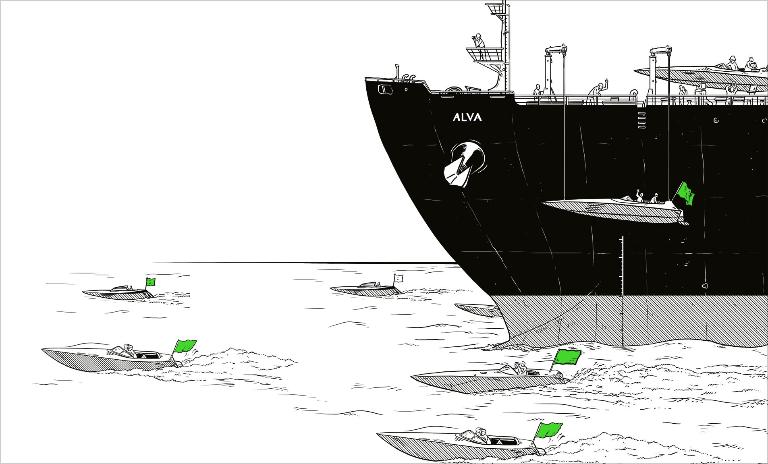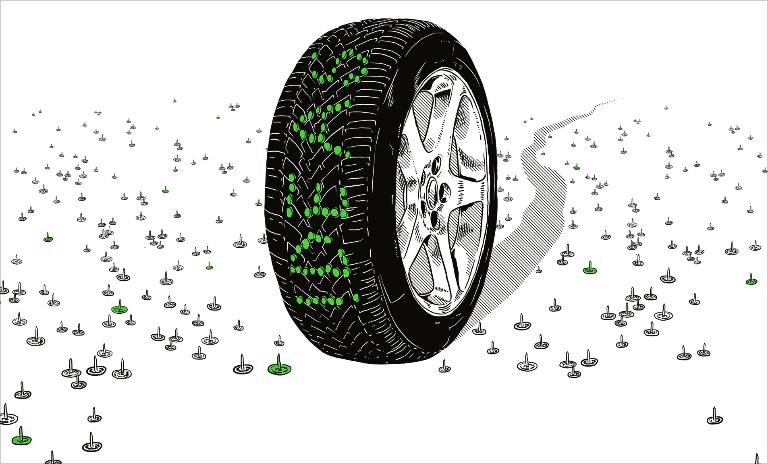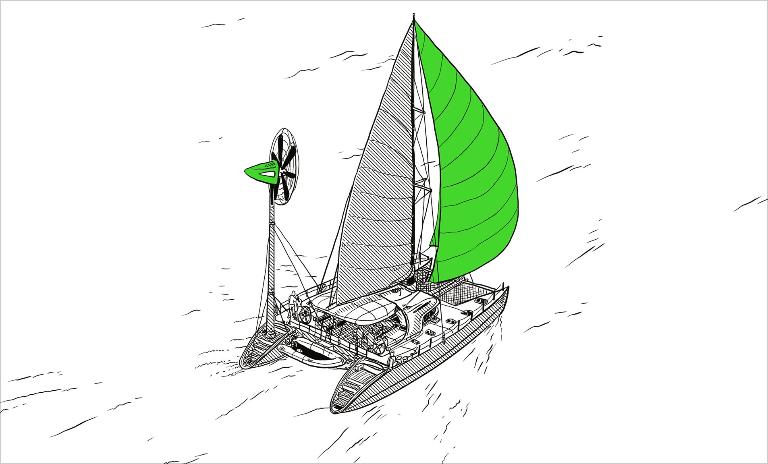Vigilant
![{[downloads[language].preview]}](https://www.rolandberger.com/publications/publication_image/cover_rolandberger_thinkact_21_vigilant_final_download_preview.jpg)
This issue of our Think:Act magazine leads on how global corporations ranging from BASF and Cisco to Corning and Haier are harnessing their innovation skills to pre-empt changes in the business environment.


by Janet Anderson and Damian Reilly
illustrations by Peachbeach
with inputs from Neelima Mahajan
and Stefan Heuer
In our digital world the business landscape changes fast. Industries are in constant flux, competitors emerge from unlikely places and new technologies threaten established business models. Companies that thrive in this environment need 360° vision, an open mind and an appetite for collaboration.
September 2016. Senior executives from a motley group of companies and institutions – including the likes of pharmacy chain Walgreens, University of California at San Francisco, health care communications company Vocera, non-profit Community Health Network and network hardware company Cisco – gathered in San Francisco for an intense two-day brainstorming session. Their goal? To find ways to improve the experience of cancer patients. The participants were carefully chosen: they came from companies that play a role in the value chain of cancer care provision.
Unlike a standard health care conference, this was a hands-on event. Participants were challenged with developing – in just two days – tangible solutions that could be implemented in a real-world situation. With them, giving feedback on each prototype, were the very people at the center of this issue: cancer patients, their spouses and caregivers including nurses, doctors and other medical specialists.

"Can you predict where lightning is going to strike? Of course you can’t, but if you generate a lot of electricity and if you put some metal rods in the ground, then the chances of lightning striking will be much greater…"
Devised by Cisco, this experiment falls under an initiative called the Hyperinnovation Living Labs. These labs bring together senior executives and experts from companies in different industries to work together intensively over a short period to solve a pressing common problem. The participants bring different perspectives to the solution-finding and decision-making processes that typically take a few months but in this case, are compressed into a few hours.
What the participants take away with them is not just the immediate solution, but a pool of ideas that can be drawn on in future and, of course, the new network they have created through their common endeavor. In the case of the health care lab in San Francisco, ultimately six ideas passed the test – and got funded.
This process, termed "ecosystem innovation", is one of a growing number of approaches designed to spur innovation and help companies deal with today’s biggest challenges. Cisco still invests heavily in traditional R&D but, like many other companies, it has learned that there is no single path to innovation.
It has almost become clichéd to say that today change happens at the speed of light. Corporate life cycles are speeding up: businesses come into being, mature and die out much sooner than they did a few decades ago. Digitization is turning established businesses and whole industries upside down. At the same time horizons are widening and boundaries between industries are blurring: the ecosystem in which a business operates is no longer clearly defined. It’s not necessarily in the same region, or even the same industry.
The most pressing question for those who run established businesses is how they can prepare for competitive threats and spot opportunities even before they appear on the horizon.
The answer lies in developing 360° vision. Businesses need to pick up the signs of change coming not just from competitors but from suppliers, customers, employees and society at large.
The threats and opportunities can come from any angle. A supplier can become a competitor, as changing technology opens up new opportunities; customers can change their behavior and expectations overnight. Competition can come from unlikely places. Digital giants like Amazon, Apple, Google and Facebook are hoovering up market share and expanding into new sectors. Equally significant is the mass of early-stage startups, as yet unknown to the wider public, any one of whom could quickly turn an established business into a footnote in the pages of history.

Freight companies are keeping an eye on customers like Amazon, toying with the idea of setting up its own shipping networks. Luxury Swiss watchmakers, with manufacturing traditions that stretch back centuries, are thinking of strategies to counter high-tech smartwatches. Real estate agents, hoteliers, taxi drivers – everyone is finding their established business model challenged. With the advent of blockchain technology, industries ranging from banking and legal services to online retail and energy could all be upended in the blink of an eye.
The high-profile corporate casualties of the past decade have stoked the fear in every business of being devoured overnight by a new entrant they didn’t see coming. No one wants to be "Ubered." And even upstarts like Uber are being Ubered by more nimble rivals – after burning $2 billion in the Chinese market, Uber was forced to sell its China operations to its much stronger local rival, the Chinese ride hailing app Didi Chuxing.
It’s tempting to see new technology as the game-changer. But the real game-changers are, arguably, the ability to pick up signals of change before they impact you and the structures and tools to act quickly on new ideas and effectively fend off threats.
"Can you predict where lightning is going to strike? Of course you can’t, but if you generate a lot of electricity and if you put some metal rods in the ground, then the chances of lightning striking will be much greater than if you just wait for a thunderstorm and for something to happen," says Bettina von Stamm, Founder and Director of the Innovation Leadership Forum in the UK.
"Innovation is, of course, very hard to see coming," she says. "But, if you keep your eyes peeled and you look in all sorts of places – not only in the obvious places – there are distinct ways to increase your odds." Most companies keep an eye on their rivals. But to succeed today, you need to look beyond your usual horizons. Take Etihad Airways, the UAE-headquartered airline, which actively looks beyond aviation for ideas. "We benchmark ourselves outside of the aviation sector, instead drawing on hospitality industry leaders for inspiration," says Senior Vice President Marketing, Shane O’Hare, referring to top hotels, fine dining establishments and private member clubs.
London-based innovation advisory company Stylus uses a similar approach when it helps clients – among them firms like Adidas, Swarovski and Volkswagen – stay ahead of the innovation curve. It looks far and wide to find answers to how consumer lifestyle trends, shifting mindsets and behaviors and changing demographics impact product design and consumer engagement.
"When we produce fashion content, it is not for the fashion industry, it’s for the automotive trade or the hospitality industry. Car manufacturers follow fashion trends for ideas on colors, materials, styling. These days, they are looking at what is happening in architecture, too," says Founder and CEO of Stylus, Marc Worth.
"Car manufacturers follow fashion trends for ideas on colors, materials, styling. These days, they are looking at what is happening in architecture, too."
Six thousand: that’s the average number of new tweets posted on Twitter every second, while every day, some 52 million photos are shared on Instagram. Buried in those tweets and photos is invaluable information on what consumers across the world are doing, their changing likes and dislikes. But the sheer weight of this information is daunting: how do you separate the wheat from the chaff, the real signals from the noise and chatter?
That’s where services like Nextatlas, developed by iCoolhunt SpA, come in. The Italian startup helps brands tap into social data to identify nascent consumer trends. Using feeds into Twitter, Instagram and Tumblr, among others, it picks up the images and opinions people are posting and where in the world they are posting them from and spots emerging trends very early. Its clients range from Prada and Barilla, to Allianz and L’Oréal.
Nextatlas is, in essence, a virtual listening post that companies can tap into to get information on the latest trends. There are also physical listening posts. Nearly every car manufacturer today has a base in Silicon Valley to monitor new developments and form targeted partnerships. Technology scouts sniff out new developments in their relevant markets. Companies embed people in certain consumer demographics to be able to latch on to the latest trends.
Creating a strong network is also essential. But the network needs to extend beyond the "usual suspects." Nathan Furr, Assistant Professor of Strategy at INSEAD, says that big companies need to actively talk to young entrepreneurs and idea generators. One way of doing this, he says, is by sponsoring an incubator. He describes this as "reverse mentoring" – the old learning from the young.
Helping create such relationships are companies like unBound Digital, a forum that brings corporates and startups together to learn from one another. "Everyone knows the ground is shifting and that corporations need to be alert or they risk being swallowed," says Founder and CEO Danny Seal. "Five or six years ago, it was startups that were desperate to meet a Unilever, a P&G, a Diageo. Now it is the other way around. Corporates are realizing they have a lot to learn from startups."
In fact, there is quite a queue forming of established firms sending delegations to Silicon Valley to gather inspiration. Some are calling it "innovation theater" because, despite the good intentions, not much of this inspiration makes it back to the headquarters.
Picking up the signals is important. But how do you sift through them and translate the meaningful signals into action? Says Worth, "What it comes down to is how quickly a company can respond."
"We need to understand the industries our corporate partners work in, but at the same time, we need to help them forget everything they know to let new things happen. "
An interesting experiment is underway in Berlin. Axel Springer Plug and Play Accelerator GmbH has partnered with Deutsche Bank to invite early-stage fintech companies to their 100-day accelerator program. The idea is simple: big established firms, such as traditional banks, envy the agility and creativity of young startups. Learning from these young companies involves special search and filtering skills.
"Fintech and insurtech are rapidly developing sectors. Innovative startups are growing strongly and are changing user behavior for good," says Jörg Rheinboldt, CEO of Axel Springer Plug and Play in Berlin. "We go to conferences, universities and startup gatherings all over Europe looking for entrepreneurs with new ideas," says Rheinboldt. From Vilnius and Warsaw to Lisbon and London. The accelerator team uses what Rheinboldt calls "special search glasses" to find the right entrepreneurs and startups. "We adjust the lenses so that we can detect where the traditional value chain can be extended or disrupted. Once we have an idea of what can be done, we talk to the startups," he says. "If we believe a team is up for it, we invite them to join our accelerator program. We always encounter founding teams who totally surprise us." The fintech startups that are chosen to receive funding gain access to Deutsche Bank’s Innovation Labs and its Digital Factory in Frankfurt so that there is a two-way flow between them and the bank’s own research and development activities in the digitization area.
While there are many learnings on both sides, this is also fertile ground for potential culture clashes. "Sometimes startups move too fast for the bigger firms – people in established companies can’t believe that a small team can set up something valuable and sustainable in just a few weeks," says Rheinboldt. Opening your mind to new ideas is not as easy as it sounds. "We need to understand the industries our corporate partners work in, but at the same time, we need to help them forget everything they know to let new things happen," he explains.

While the payoff from a winning idea may be huge, the vast majority of ideas are doomed to fail – and the cost of failure is often massive. This makes it imperative to weed out bad ideas quickly. By the same token, many promising ideas may be scrutinized to death before they are put to the test. How do you get the balance right?
One way is not to fear failure, but to embrace it. It’s an approach more and more businesses are trying to adopt through the use of what Furr describes as "rapid experimentation." It’s an excellent way to speed up the development process, but it’s also, according to Furr, helpful in getting the timing right for a new idea. "We tend to think the biggest mistake a company can make when responding to a technology threat is to leap too late, but leaping too early is just as bad. Companies that leap too early go all in before the market is ready and get their fingers burned. But disruption is not a light switch; it’s a ‘maybe.’ Companies need to respond to it by building capabilities through rapid experimentation. If you are managing uncertainty, it’s all about the speed of learning."
This lesson has even been taken onboard by industrial giants. GE, a leader in the innovation field for many years, has just launched Fuse, a 3D printing and microfabrication factory that enables startups to carry out rapid product prototyping of their ideas. They believe that Fuse can cut the time from idea to product by 50%. GE says this will help it evolve from a traditional industrial company to a digital industrial company. They see their future role as a business services platform connecting innovators and helping them build successful businesses.
Yet other companies take it one step further. In October 2016, Marriott Hotels turned one of its properties into a live lab to test out new concepts. By opening M Beta, a hotel innovation incubator, at its Charlotte Marriott City Center hotel in North Carolina, USA, the company has made it possible to test new ideas on real guests who give feedback in real time using "physical beta buttons" available all around the hotel.
Companies like Marriott understand the need to quickly test new ideas, junk the ones that don’t work and roll out the ones that do, but of course not everyone can afford to do it in a real-life environment.
"We undertake the process for the outcomes – for the growth that we believe will result from working in this way."
Customer feedback for new ideas is great, but what if you are an engineering firm like Airbus Defence and Space, whose products are satellites and defence systems and whose customers include multinational agencies and institutions? The pressure to innovate has always been there, but now the requirement for speed is being felt in this sector too. Where it once considered its competition to be government-backed institutions like NASA, today, with space startups getting seed investment from venture capitalists, Airbus Defence and Space has recognized the need to speed up the process of finding and developing the right new ideas.
To do this it taps into the creativity of all its employees. "We put out a company-wide call for people to submit their ideas for technical or business innovation," says Guido Schwartz, Deputy Head of Corporate Innovation at the company. Anyone can submit an idea – all are welcome. The challenge, then, is how to filter these ideas and identify quickly which ones to take forward.
The company’s Innovation Board considers the ideas from several perspectives. Does it have a business model that works, is it technically feasible, does it fit into the overall company strategy, is it of interest to more than one of the business lines? If it passes these tests, the team behind the idea is given the funding and support to develop their idea further.
There are several stages in the funnel. "We have an accelerator phase and a seed phase," says Schwartz. "Throughout the process the innovation team takes their idea out to test it with potential customers, internal and external. If an idea passes every stage, it goes into a maturation phase, leading to a product or service that is ready to go to market."
One challenge in this funneling process is overcoming existing mindsets – the tendency to reject a new idea because it takes a different approach to established ways. "This tendency is natural, so we counter it by ensuring the idea owners are supported by coaches the whole way, helping them to make their case. The team fighting for a new idea is never alone," says Schwartz.
By injecting an entrepreneurial spirit into the company’s staff, Airbus Defence and Space hopes it will stay ahead of the likes of SpaceX.
This idea can be taken further. The Chinese white goods giant Haier is flattening its organization in order to create an open marketplace for ideas. Employees are seen as entrepreneurs and anyone with a good idea can look for funding and manpower resources to create a micro-enterprise. If the idea works, they reap the benefits. Likewise, they run the risk of losses if it doesn’t. The motivation to make the project succeed is high and the system encourages internal competition. By turning employees into entrepreneurs, Haier not only injects a startup spirit into its business, but it ensures that as a company, it stays at the cutting edge.
One thing we learn from this journey is that there is no silver bullet – there is no single approach that will work 100% every time. Most companies are adopting a portfolio of approaches and these sit alongside their conventional R&D efforts. Like the chemical company BASF, for example, whose Creator SpaceTM program combines a whole host of ideas and methods, from co-creation and open innovation to empathic design and ideation, to help them break the barriers that can prevent a large B2B company from hearing and reacting to what is going on around it.
But key to it all is leadership. Being ready and able to react quickly to change requires leadership that is oriented toward innovation. "It is important to create a shared vision at the outset of what innovation means, why it is needed, and where it is supposed to take a company," says von Stamm. "Organizations must understand that the probability of achieving innovation is fundamentally linked to the dominant values and behaviors of that organization. You need to map out the journey."
Business leaders not only have to define the vision, they also have to believe in it and live it. Often this means they need to change their values and behaviors, too. "They can lose enthusiasm for innovation when they realize what it will entail," says von Stamm. And at the same time there is the day-to-day business to be tended to. "Ideally, organizations need to be ambidextrous: able to achieve operational excellence on one hand while promoting innovation excellence with the other. Both hands need to work together. The challenge is big, because two distinctly different mindsets are required," she says.
"The team fighting for a new idea is never alone."
At glass and ceramics manufacturer Corning, each division – such as telecom, life sciences and Gorilla Glass (the revolutionary protective glass cover on touch-screen devices) – does their own innovation for their business. Projects deemed higher risk, higher reward go to a central innovation office that focuses on entrepreneurial opportunities spanning all business segments. The idea is simple. "Divisions have to meet their quarterly goals and their plans. If you have a very big, high-risk project in a division that swings wildly while you try to start up and scale it, it will end up getting tamped down. So if you have a tough quarter, you slow down spending," says Martin J. Curran, Executive Vice President and Corning’s first ever Innovation Officer. "When you have a large idea, you have to decide whether it can be birthed, managed and nurtured inside a division or do you need to put it in the center, where the research and development guys are, to be able to run a project until it gets to a point and then hand it back to the business, or if it gets big enough, create its own business." As an example, he talks of using Gorilla Glass in automobiles. "That’s clearly a Gorilla Glass division adjacency but they were so focused on their consumer electronics piece so we would take that on."
For such initiatives to succeed and not get lost or trampled by the company’s existing products, structures and processes, top management buy-in is essential. In Corning’s case, Curran clearly has it: he works for both the CTO and the Chairman of the Board. He also sits on the 12-member management committee, which then gets full visibility on the portfolio of projects the innovation office is working on and chances of acceptability increase.

At the end of the day, it boils down to one thing: true innovation will not happen in isolation. "The secret to inventing something new lies in our interconnectedness," says Joe Heinrich, an evolutionary biologist at Harvard. "For almost every successful inventor, there is a group of people working on the same idea, often coincidentally. Those who readily trade insights with others in the group tend to reach their goals faster." He believes that wherever ideas are traded freely and openly, progress will follow and that some of the best innovations happen when people with diverse perspectives work on them. "You don’t need to be the best, but you do need to collaborate with as many people as possible," says Heinrich.
In fact, in today’s digitized world, collaboration is essential. This is the thought that led Cisco to set up its Hyperinnovation Living Labs.
"If you think about the Internet of Things, it no longer makes sense to innovate in isolation," says Kate O’Keeffe, leader of the initiative. "Innovating in isolation is in effect inherently limiting. You are on your own – you have a superior technology, but you can’t leverage the true synergies and capacities of the digitized future. Unless you are connecting your data to the data of others to make smarter, better decision-making, you are not really leveraging the full benefit of a digitized future."
Human beings tend to innovate in groups, and so Cisco believes that industries and corporations should do the same. "We also take an ecosystem approach because we believe that’s the best way to make markets. When we think about innovation, we think about not just whether or not we can create a new product that will satisfy a need. We think about needs that may not yet be in existence. We think about marketplaces that have yet to be thought of. And we think that the greatest and simplest way to drive that kind of shift is through inclusion of different aspects of that one industry."
The value that comes from diversity and from learning from others is enormous. But being open to learn from others takes a degree of humility. "We have humility about what our customers know about their industries and their customers. And that humility allows us to listen differently," says O’Keeffe.


![{[downloads[language].preview]}](https://www.rolandberger.com/publications/publication_image/cover_rolandberger_thinkact_21_vigilant_final_download_preview.jpg)
This issue of our Think:Act magazine leads on how global corporations ranging from BASF and Cisco to Corning and Haier are harnessing their innovation skills to pre-empt changes in the business environment.
Curious about the contents of our newest Think:Act magazine? Receive your very own copy by signing up now! Subscribe here to receive our Think:Act magazine and the latest news from Roland Berger.
